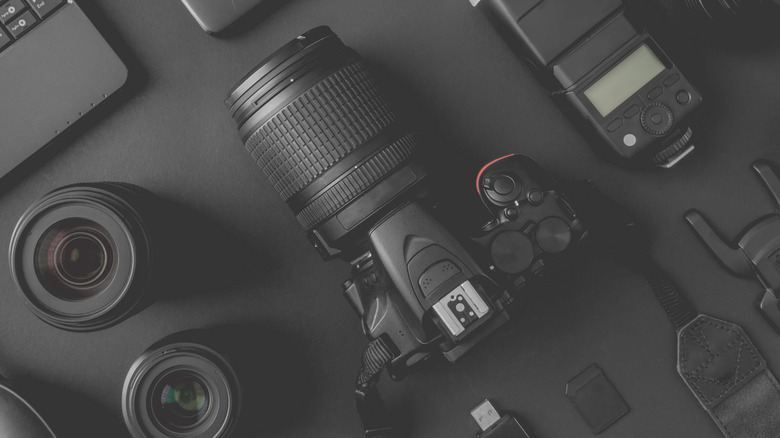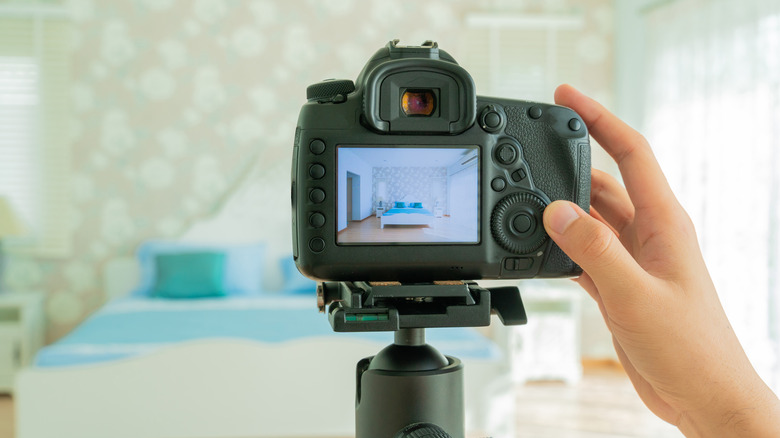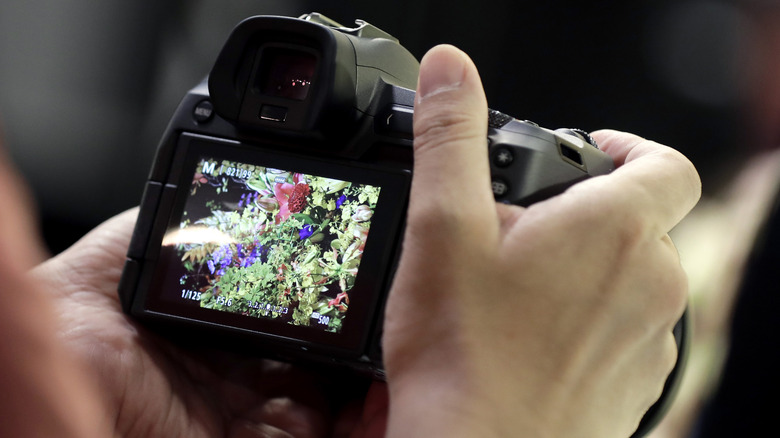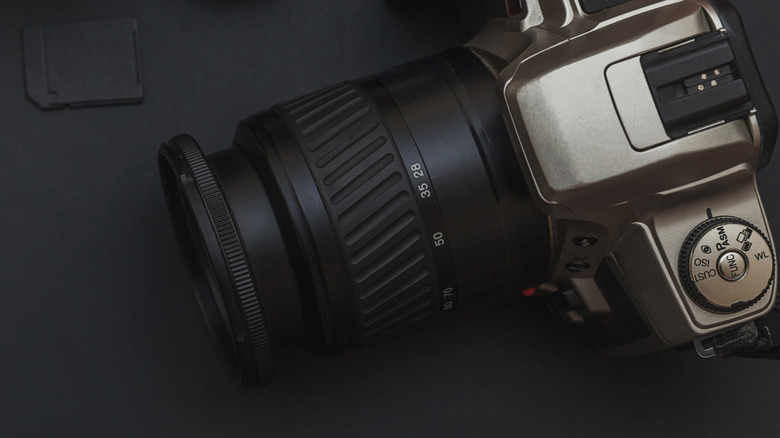What's The Difference Between Mirrorless And DSLR Cameras?
We may receive a commission on purchases made from links.
Are you looking to invest in a new camera? There's a wide array of choices out there and many different types of cameras to suit different purposes. DSLR cameras and mirrorless cameras are two types for mainly professional use, and if you're looking into these, it's best to know the differences between them before making a decision. There are marked distinctions between the two types of cameras, but neither is necessarily better than the other. The best camera for you depends mainly on the kind of shooting you are doing, as well as which features you prefer.
The main difference between a DSLR and a mirrorless camera is that a DSLR uses a mirror, while the mirrorless camera, of course, does not. This changes how each camera works, as well as the features they provide. Mirrorless cameras used to be better geared towards hobbyist use, but they have made great strides technology-wise over the years. You can now find many high-end mirrorless cameras for pro use, and it has become the preference for many photographers because of the advancements manufacturers have made.
What is a DSLR camera?
Digital Single Lens Reflex (DSLR) cameras are defined by their digital imaging sensors combined with the mechanisms of a single-lens reflex camera. This "reflex" is also what makes DSLRs different from other digital cameras, namely mirrorless cameras. The reflex mechanism involves the action of a mirror inside the body used to project light into the viewfinder or the sensor. Before you take a photo, that mirror is guiding light into the viewfinder. Once the photo is taken, the mirror flips to guide the light to the sensor.
DSLRs are the successor of film cameras using the SLR mechanism. They became popular during the 2000s and continued to be the camera of choice for many professionals for about a decade or so, as noted by Petr Nuska of Durham University. DSLRs were used especially for their video-taking capabilities at the time, as many amateur or budget filmmakers were drawn to the camera because of its ability to shoot high-quality video. Eventually, DSLRs spread into even more professional and commercial filmmaking, as their video quality neared the same level as some higher-end video cameras.
What is a mirrorless camera?
Mirrorless cameras take out the mechanisms used by DSLRs. It doesn't include a mirror for taking photos; instead, light directly hits the camera's sensor. This image is then shown on an LCD screen, which replaces an optical viewfinder. Because of this, mirrorless cameras are far smaller and easier to travel with. They're also much quieter, as you don't hear the sound of the mirror flipping every time you take a photo.
At their outset, mirrorless cameras did not allow for very high-quality electronic viewfinders. Their resolutions and clarity were not up to par with DSLRs for a while, and they lacked some of the features as well. For this reason, mirrorless cameras did not enjoy the same success among professionals as DSLRs did until the 2010s. Eventually, the technology of these cameras picked up and began to rival DSLRs. With their small size and portability, they began to grow in popularity among photographers as their capabilities advanced.
The differences between DSLR and mirrorless cameras
DSLR and mirrorless cameras work in different ways to take photos, and the outcomes of each of these may be preferable to some. The DSLR includes a mirror inside of its body that guides the light going through the lens at a 45-degree angle into the optical viewfinder, as explained by Adorama. This is where the image you see in this viewfinder comes from. Once you take your photo, the mirror flips so the light can reach the sensor underneath it. Then, the resulting picture is saved.
Mirrorless cameras, given their namesake, don't have a mirror. The light travels directly to the sensor but is viewed electronically. When you take a photo, the light information on the sensor at that moment is saved. This is a very different method from the DSLR and has some advantages over that technology. Mirrorless cameras are lighter than their DSLR counterparts, for example, and they're generally faster, easier to use, images are electronically stabilized, and you don't have to worry about maintaining the mirror element. However, for some users a DSLR may be more suited to their needs, particularly because DSLRs support a wider variety of lenses and attachments. As well, DSLR cameras offer better battery life, which may be ideal when working in remote locations.
Which type of camera is better?
One of the biggest perks mirrorless cameras have is the ability to be small, light, and portable. Now that mirrorless cameras have advanced so they can produce higher-quality photos, photographers can get the best of both worlds. Mirrorless cameras also excel with their autofocusing capabilities, being much faster and providing better continuous autofocus between photos. Also, using an electronic viewfinder is a better experience these days than it was in the past. The preview is higher quality, and it's much easier to see how dark-lit photos will turn out than it is on DSLRs.
However, DSLRs have their own advantages that some may prefer. For one, DSLRs use a lot less battery power since it doesn't need to keep an electronic viewfinder going. This can be a lifesaver in many situations. DSLRs also have tons more lenses and accessories available since they've been the camera of choice for so long. Overall, mirrorless cameras have grown to become the camera of choice for many. The largest companies, Nikon and Canon, haven't released new DSLRs in a while (via Digital Photography Review), so it's easy to see which direction the technology is headed. Ultimately, the best type of camera is the one that meets your own particular needs.




